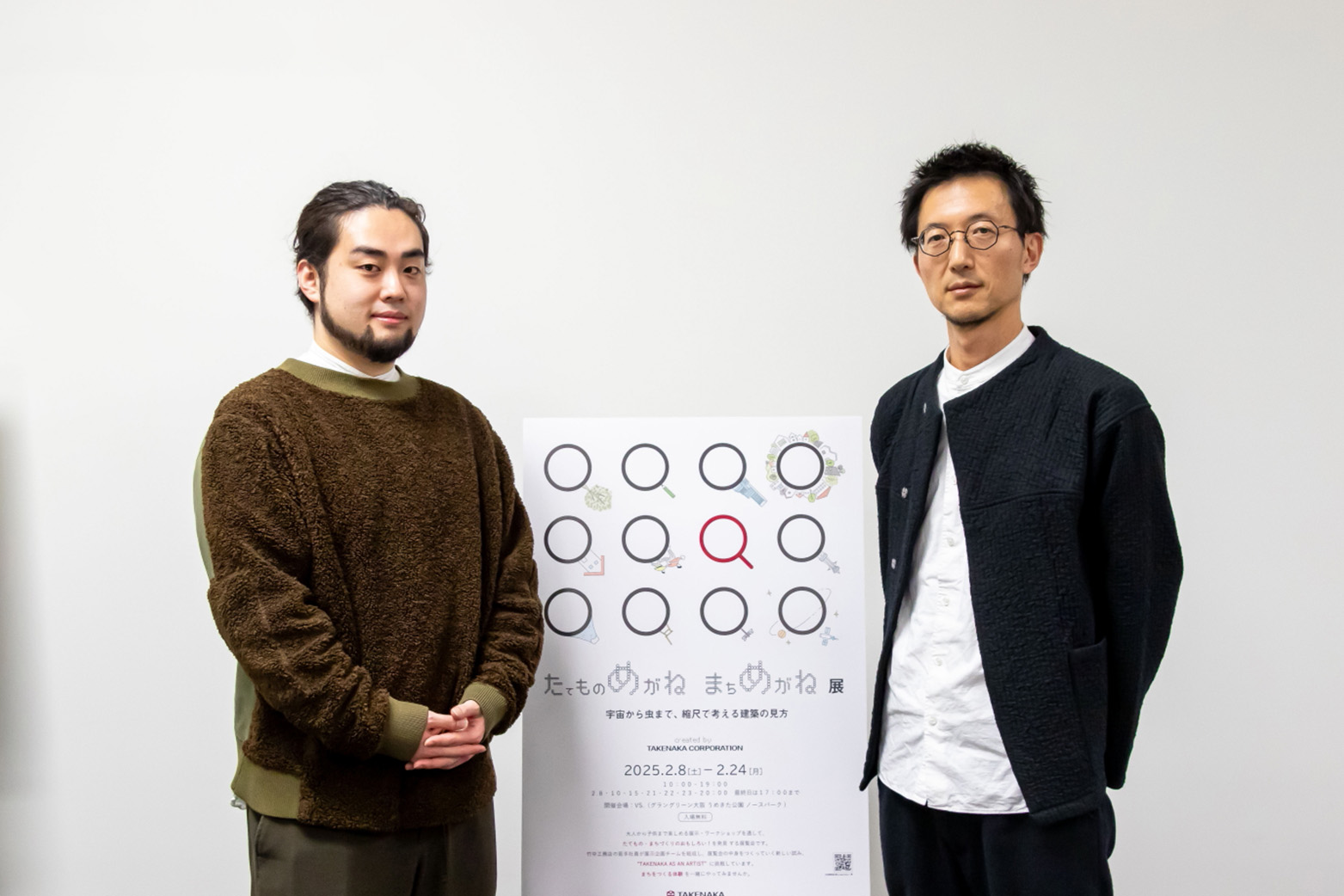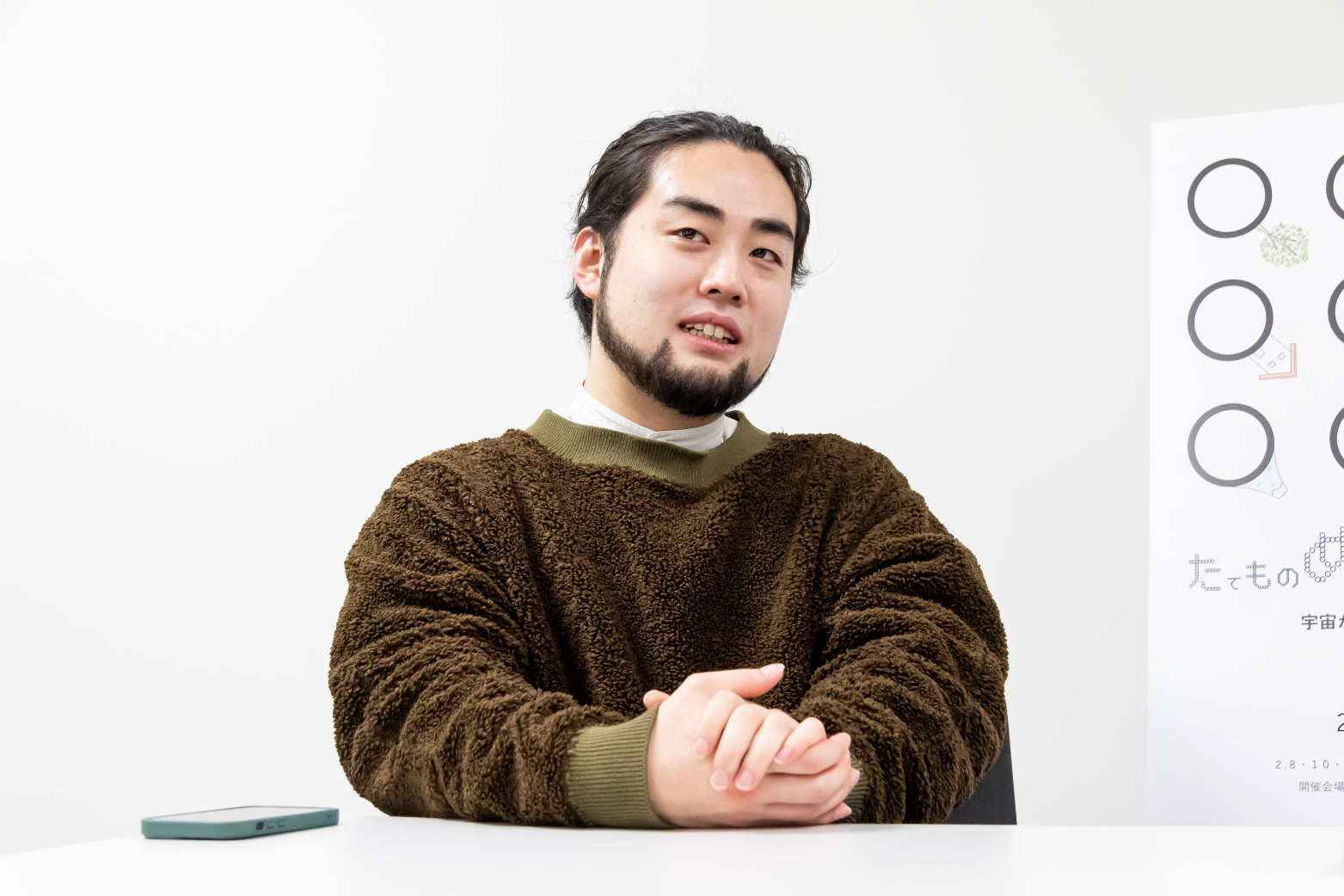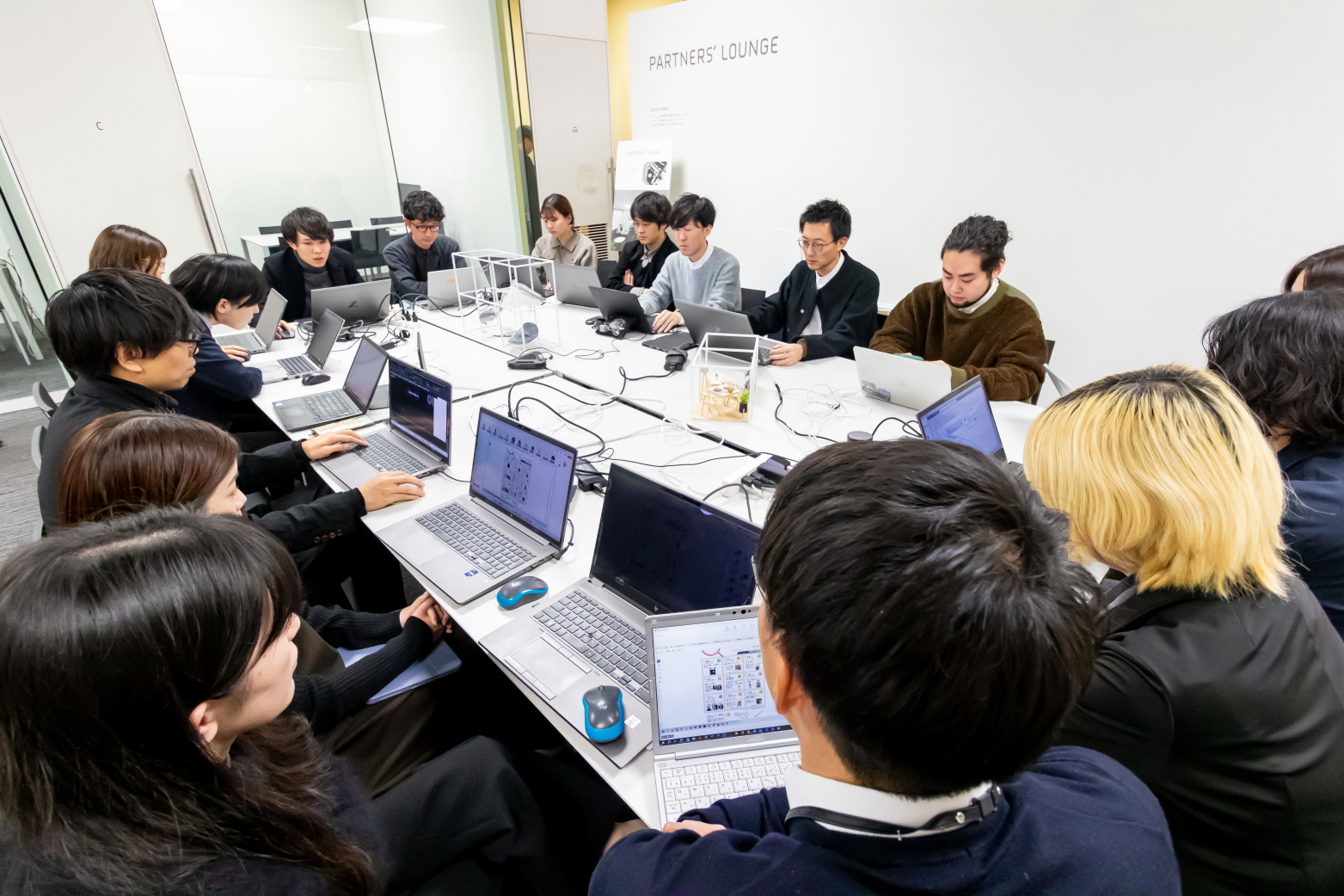Voices


2.11[2025]
Tambara
Okitsu
What is the Role of “Curation” at Corporate Exhibitions? Curator Kensho Tambara’s Approach Has Helped Corporate Teams to Develop a Clear Sense of Ownership
The exhibition that will kick off 2025 is the “Building Glasses, Town Glasses Exhibition” by Takenaka Corporation, a leading general construction company in Japan. The aim was to hold an exhibition that would “broadly communicate the appeal of architecture and urban development, and foster the next generation of architectural talent”. VS. appointed Mr. Kensyo Tambara, an artist and curator active in Japan and abroad, to promote the project together with Takenaka Corporation’s young team led by Mr. Toshihiro Okitsu, leader of the Osaka Head Office’s Design Department. The following is an interview with the elite team on how they tackled the “unprecedented corporate exhibition.”
Standing between Art and Society
Expanding the Possibilities of “Curation”
–Mr. Tambara, you are participating in this exhibition as a curator. What role does a curator play?

In a nutshell, a curator’s job is to “think about the contents of exhibitions,” which is partially very similar to the work of a museum curator. I am not affiliated with any organization and work as an independent curator. For that reason, I am often involved in projects that are limited in duration or fluid in content, such as art festivals and corporate-sponsored exhibitions.
I originally worked as a performance artist in the U.S. and was interested in creating experiences and spaces in public areas. After returning to Japan, I began curating exhibitions as an expression not confined to the limited field of performance art.
That is why I have taken on the challenge of various initiatives, such as the space design centered around the viewing experience and educational programs beyond the format of an exhibition, unlike the museum methodology of how to organize and communicate research themes to the general public. It is true that the word “curation” has become increasingly broad in my mind, and I have often felt the limitations of the one-way communication commonly seen in conventional exhibitions, where experts and geniuses are on one side and the (uninformed) general public is on the other.
The “Building Glasses, Town Glasses Exhibition” was born as a result of our discussions with everyone on how we could update the format of a corporate exhibition. I did not want the exhibition to be a one-way, top-down, explanation. I aimed to create an exhibition that would allow visitors to discover and learn for themselves through the viewing experience.
To Ensure that the Organizing Company Gains a Sense of Ownership of the Project.Raising Artistic Awareness in the Preparation Phase
–Takenaka Corporation’s team leader is Mr. Okitsu, an 18-year veteran of the design field. He has worked on buildings in a variety of uses and locations, including Japan’s first fireproof wooden office building, Nichia Corporation’s research laboratory on the shore of Lake Suwa, a Suntory Natural Mineral Water brand experience facility at the foot of the Northern Alps, and the Kobe Pharmaceutical University campus on the steep slopes of Mt. Rokko. So you two have teamed up for this project.

There were about 16 team members in total. We came from various sections and positions, such as design department, urban development related sections and research positions, but we didn’t start coming up with ideas for the exhibition until several months after the kick-off.
The most important thing from the beginning was for the team members to gain a sense of ownership of their company and this project. The first few months were mostly spent in team-building workshops and discussions on exhibition as a means of expression based on past art works. A sense of ownership means that each person involved takes personal responsibility and makes this project “their own”.
Corporate art projects like this tend to be “other people’s business”. We plan the project, create the content, and then the senior management just gives the OKs at key points. It is not that there is anything wrong with that, but what Takenaka Corporation was trying to do this time was something the company itself had a clear sense of ownership. This project is about creating everything ourselves, rather than having someone else do it. That is why we spent time on workshops and other preparatory activities before the idea generation phase.
In the beginning, we didn’t think we would be so hands-on (laughs). However, since we are usually involved in production, once we started engaging in the process, we became more particular about the details. From planning to completion, we worked through a variety of conditions and issues while getting the cooperation of various people to create a single piece. It is the same process as in our daily work.
At first, I had high hopes that this project would serve as a case study of a new form of corporate exhibition, one in which the “client creates the exhibition” rather than the existing format of “providing an exhibition to the client”. However, after working side by side with them, I realized that this method was only possible because we collaborated with the Takenaka Corporation. It may sound obvious, but there is a limit to what can be done with curation alone. I believe we were able to accomplish so much thanks to the team spirit of everyone at Takenaka Corporation, who were highly enthusiastic throughout the entire project, took the initiative, and kept us in laughter even when meetings dragged on late into the night.
As far as I know, there has never been a corporate exhibition in Japan or abroad where a single team has taken the sense of ownership to oversee the entire process from conceptualization to the layout of the wall text in the exhibition, and I am impressed that this project can’t be easily replicated.
Friendly, Interactive Exhibits
Creating “Foundational Experiences” for the Next Generation of Architects
All of our employees find architecture and urban development interesting. The main theme of this exhibition was to promote public awareness and interest in this fascination. Taking “scale” as a starting point, which is the basis of the architectural concept, we have incorporated it into friendly hands-on exhibits and workshops.
The first room you will see this time is STUDIO A of VS., a large space with a ceiling height of 15 meters. This is a “Room to Become Life-Sized” that serves as an “introduction” to give a sense of scale.

As the basis for creating an exhibition, it is a major factor to feel the need to hold the exhibition at that location. That iconic large space could only be used because it was held at the VS. and the team was sharing the idea of presenting a large-scale installation from the early stages of the project
Everyone involved in architecture and urban development today has some kind of foundational experience. I have sensed that Takenaka Corporation’s staff hopes this exhibition will be the fundamental experience for the next generation. That is why I hope that people who have not been exposed to architecture before, such as children and students, or even people who have never heard of Takenaka Corporation, will come to see this exhibition.


